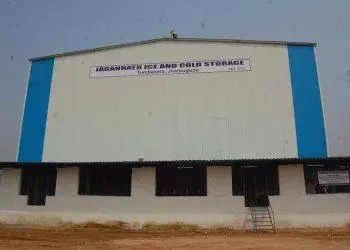Cold storage policy: Panacea for food inflation | Bhubaneswar News

Agriculture had a landmark year in 2013. National Food Security Act (NFSA) was enforced, and National Centre for Cold-chain Development (NCCD) was established. This was done considering that food price is the basic fabric of food security. So, when a poor potato harvest hit Uttar Pradesh and West Bengal in the second quarter of FY 2024-25, retail inflation was the highest in Odisha at 7.05% in March 2024 compared to 4.85% in the country.
The rise in retail inflation in Odisha is mainly attributed to the inflation rate of vegetables, which was the highest at 28.34%. Consumer Food Price Index (CFPI) in Odisha has shown an increase of 12% in July 2023 (year-on-year). While experts unanimously pointed to the rising costs of buying from neighbouring states, putting food on the plate has become a struggle for the poor.
With all eyes on the new dispensation, the cabinet has approved a Rs 252 crore package for the construction of new cold storage units across all 58 subdivisions of the state, along with the restoration of non-functional ones, in five years. The hub-and-spoke model envisions the directorate of horticulture as the facilitating agency for developing agriculture production clusters (APCs).
Odisha’s cold storage policy has instilled a new hope in farmers and consumers, anticipating moderation of food prices and reducing post-harvest loss with a rise in per capita availability of fruits and vegetables.
For a state that has more than half of its workforce employed in agriculture, a meagre 5.8 lakh MT of storage facility is inadequate. States with similar arable land like Bihar, Haryana and West Bengal operate with twice as large capacities.
The policy has clearly addressed the financial viability of cold storages, which will encourage private entrepreneurs to set up such facilities. The policy has promised a tariff subsidy of 50% on the total electricity bill for seven years. However, it is suggested that the subsidy be enhanced to 70% for seven years for new entrepreneurs. The policy interventions will help develop agro-processing plants in the MSME sector.
From the income generation perspective of farmers, there are numerous positives like expansive market access to local produce, in-house safety and fortification, regularisation of quality control, scaling production for exotic vegetables, etc.
Farmers, APC clusters, farmer producer organisations (FPOs), village producer organisations (VPO)s and other stakeholders should be sensitised on cold chain management. Role of both NGOs and the community will be crucial for monitoring and evaluation. Their involvement will initiate the public-private-community partnership (PPCP) model.
(Mohanty is a professor in finance at XIMB; Routray is an economist at the centre of excellence in fiscal policy & taxation, XIM University)
The rise in retail inflation in Odisha is mainly attributed to the inflation rate of vegetables, which was the highest at 28.34%. Consumer Food Price Index (CFPI) in Odisha has shown an increase of 12% in July 2023 (year-on-year). While experts unanimously pointed to the rising costs of buying from neighbouring states, putting food on the plate has become a struggle for the poor.
With all eyes on the new dispensation, the cabinet has approved a Rs 252 crore package for the construction of new cold storage units across all 58 subdivisions of the state, along with the restoration of non-functional ones, in five years. The hub-and-spoke model envisions the directorate of horticulture as the facilitating agency for developing agriculture production clusters (APCs).
Odisha’s cold storage policy has instilled a new hope in farmers and consumers, anticipating moderation of food prices and reducing post-harvest loss with a rise in per capita availability of fruits and vegetables.
For a state that has more than half of its workforce employed in agriculture, a meagre 5.8 lakh MT of storage facility is inadequate. States with similar arable land like Bihar, Haryana and West Bengal operate with twice as large capacities.
The policy has clearly addressed the financial viability of cold storages, which will encourage private entrepreneurs to set up such facilities. The policy has promised a tariff subsidy of 50% on the total electricity bill for seven years. However, it is suggested that the subsidy be enhanced to 70% for seven years for new entrepreneurs. The policy interventions will help develop agro-processing plants in the MSME sector.
From the income generation perspective of farmers, there are numerous positives like expansive market access to local produce, in-house safety and fortification, regularisation of quality control, scaling production for exotic vegetables, etc.
Farmers, APC clusters, farmer producer organisations (FPOs), village producer organisations (VPO)s and other stakeholders should be sensitised on cold chain management. Role of both NGOs and the community will be crucial for monitoring and evaluation. Their involvement will initiate the public-private-community partnership (PPCP) model.
(Mohanty is a professor in finance at XIMB; Routray is an economist at the centre of excellence in fiscal policy & taxation, XIM University)
















